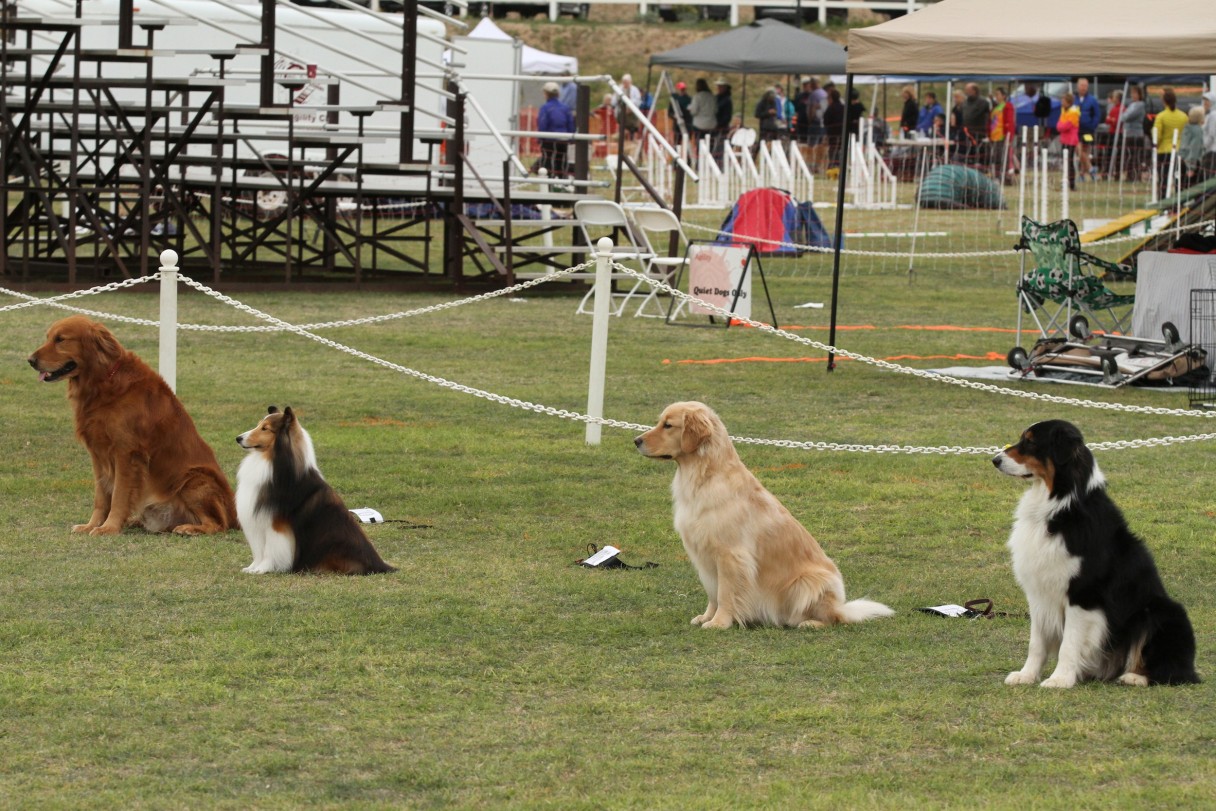It was a fiery tower of flame. Or so it must have appeared to the English Springer Spaniel whose body language made it crystal clear he was having no parts of this frightening sight.
The incident took place many years ago at Canada’s prestigious “Show of Shows,” an annual event that pits the previous year’s Best in Show victors against each other to determine the best of the best. Each dog is examined, moved, and scored by three separate judges. So the Springer was no neophyte to the show world, being a multiple Best in Show winner. However, his ring experience was no help when he caught sight of the second judge—he cringed and did his best to back as far away as the lead would allow. The event was formal, and the stately woman was attired in a full-length sheath dress completely covered in red sequins that sparkled and flickered with each move of her body.
Obviously unnerved by the apparent towering inferno before him, the dog did his utmost to keep a safe distance, which unfortunately prevented him from scoring well under that judge.
As current fashions routinely feature sequins, rhinestones, and myriad other glittering items, seasoned show dogs of today are used to sparkling stuff and ignore it. They’ve inadvertently been proofed against such a distraction because they’ve been exposed to it so often and learned it’s no threat.
 Whether an exhibitor plans to participate in conformation, obedience, rally, agility, or any other dog sport, proofing the dog is an excellent idea. It starts with that all-important puppy socialization, exposing the youngster to as many different people, sights, and sounds as possible.
Whether an exhibitor plans to participate in conformation, obedience, rally, agility, or any other dog sport, proofing the dog is an excellent idea. It starts with that all-important puppy socialization, exposing the youngster to as many different people, sights, and sounds as possible.
It’s not enough for the pup to be exposed to a wide variety, however. The experiences should also be pleasant, or at least nonthreatening. Consider carrying a pocketful of small treats when walking your pup and supplying them to strangers to give to your youngster when they stop to admire him. The average pup will soon get the idea that strangers are treat givers and pretty nice people.
The catch is that people come in all sizes, shapes, colors, and smells. They wear floppy hats, clunky jewelry, and flowing scarves. They carry canes, umbrellas, and shopping bags. They wear heady perfume or smoke odoriferous tobacco products. Life is full of surprises. It’s not always easy to predict what your pup may encounter, and especially in a show ring. One pup I considered well-socialized reacted in fright when approached by a judge with a back deformity.
While obedience exhibitors are likely to have more reasons to proof their dogs, conformation exhibitors still have their share of potential problems. How does your dog react to having another dog running around the ring behind him? And if your breed standard specifies height requirements, has your dog learned to accept the wicket? Is your dog likely to be intimidated by extremely tall or particularly ponderous judges? It happens.
Perhaps the best plan is to observe all the possible distractions at shows and trials, make a list, and present the situations in a pleasant way to your dog one by one. Don’t overwhelm her! There are certain things you can expect to encounter, however, such as a crate trolley with squeaky wheels (doesn’t anyone ever oil those things?), metal chairs being dragged or dropped, cheering, and applause—the list goes on and on. Then there are possible events such as a ring gate getting knocked over, or a dog who gets up on the long sit or down and wants to play (with your dog, of course).

In obedience especially, anything can happen. Proofing can truly test your imagination.
There are also the circumstances that pretty much defy proofing—as if you could even imagine them happening—such as the time at one outdoor trial when a skydiver came out of the blue and parachuted to a picturesque landing only a few yards away from the obedience rings. Heck, dogs and handlers alike were distracted!
And then there was the afternoon when our boy, Dudley, broke the long down, his favorite exercise, when a large and bold grasshopper bounced across the ring, landed on his head, and crawled into his ear. I’m not sure how you’d proof for that. Or would you even want to? —Alice Bixler, Briard Club of America, March 2013 AKC Gazette
Read more of the AKC Gazette here, and visit us on Facebook and Twitter.


